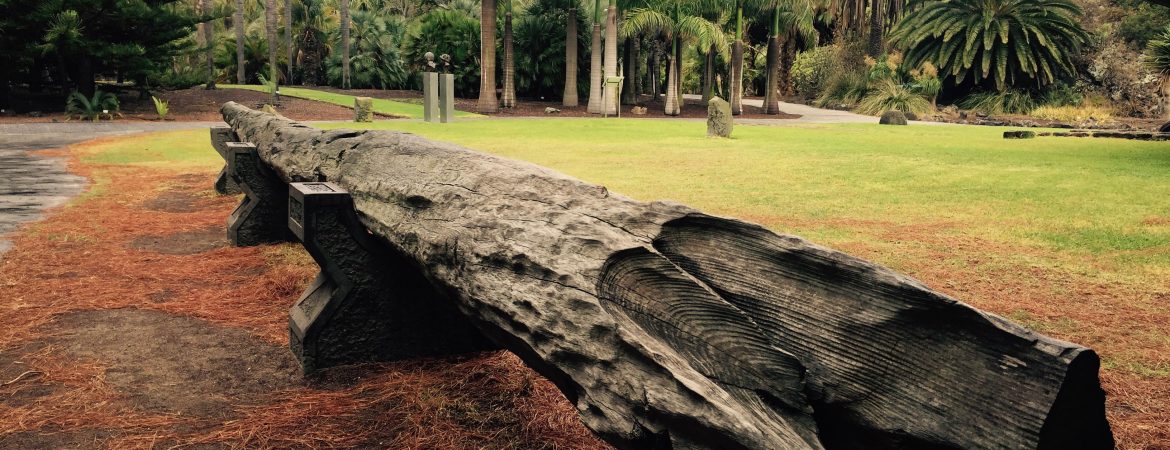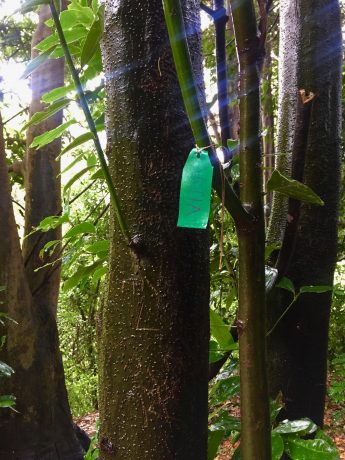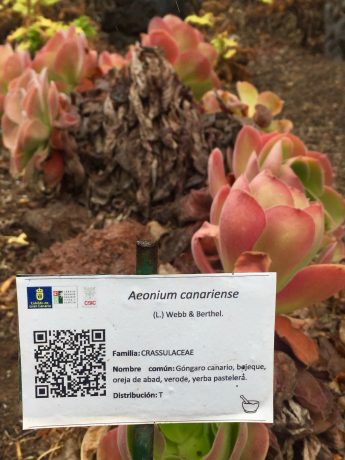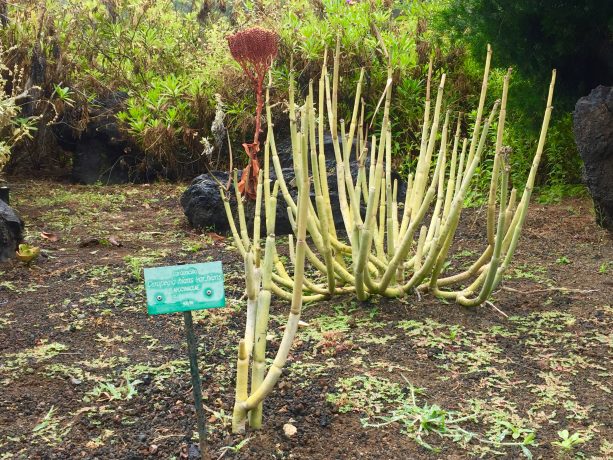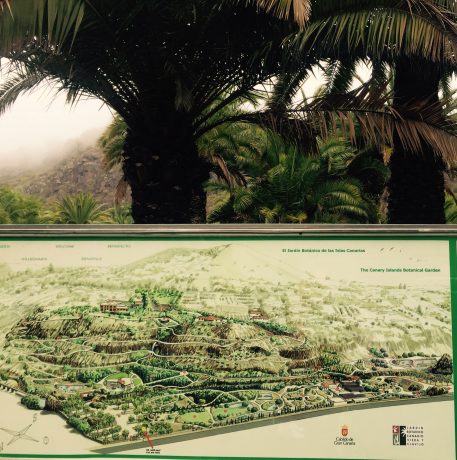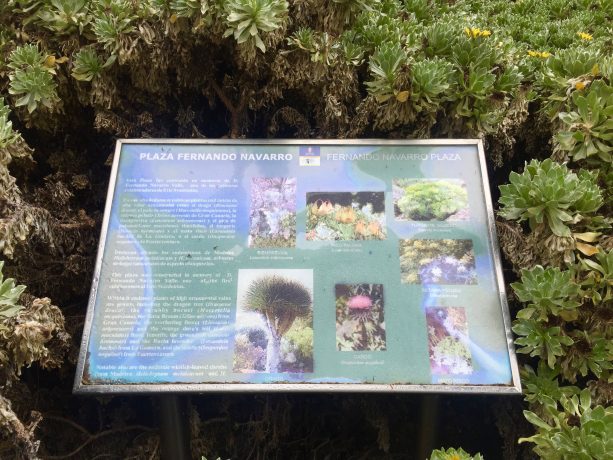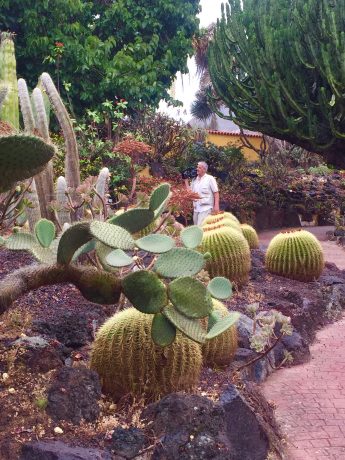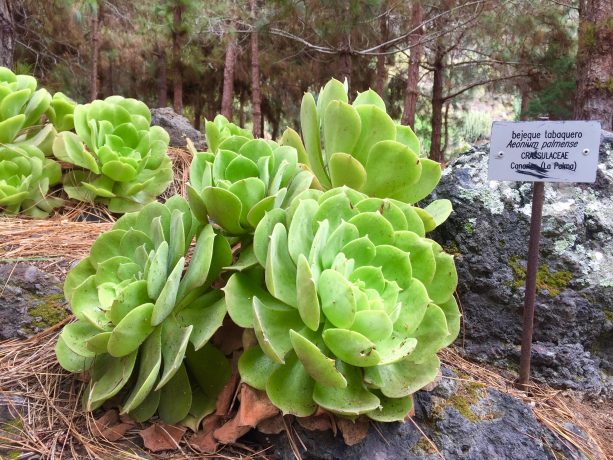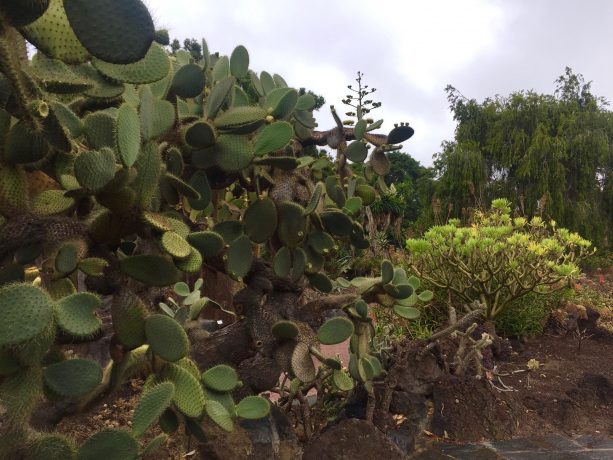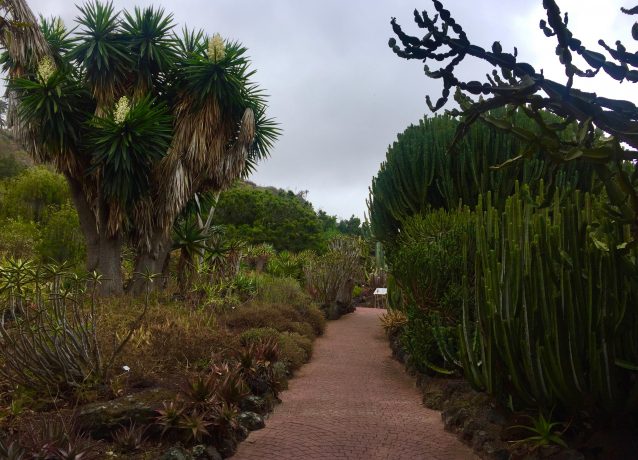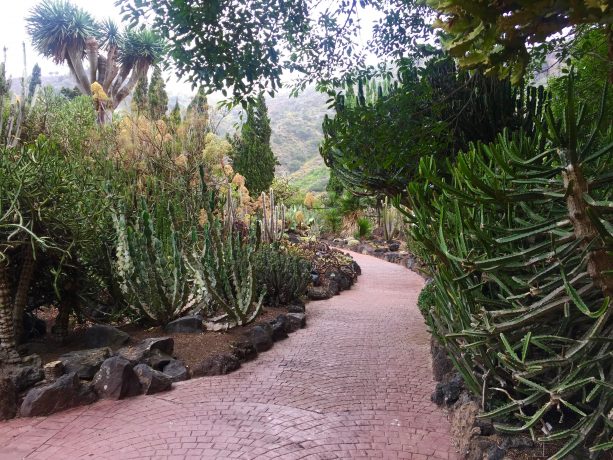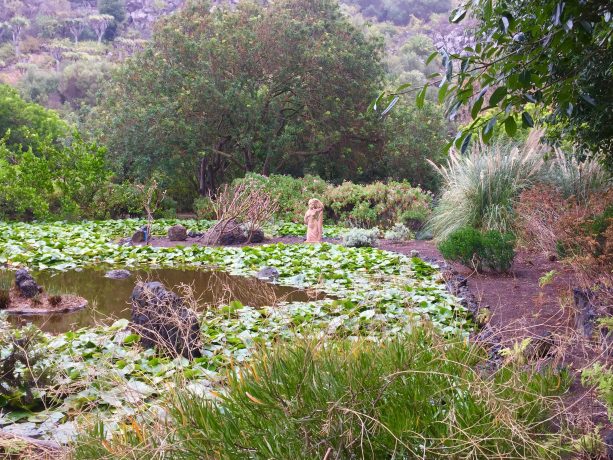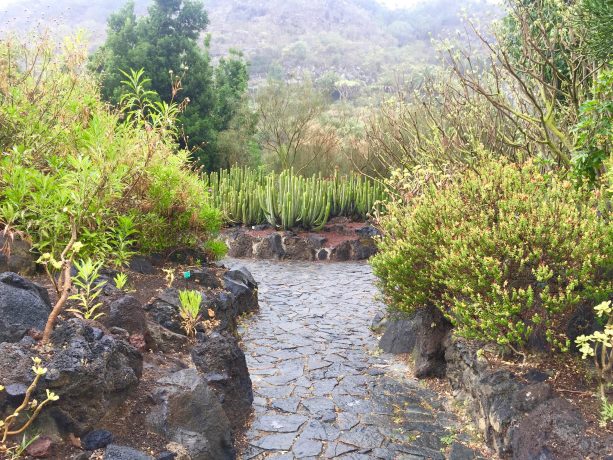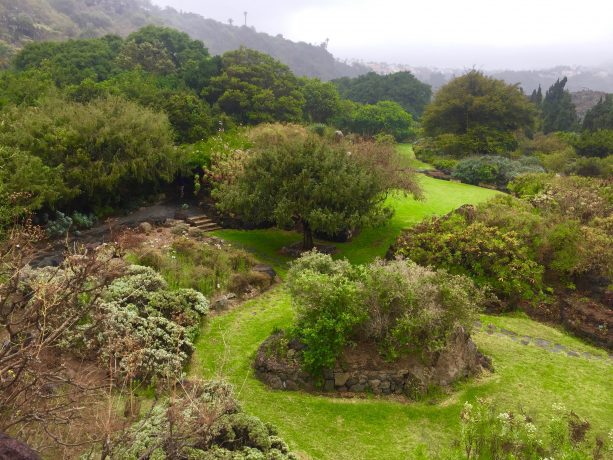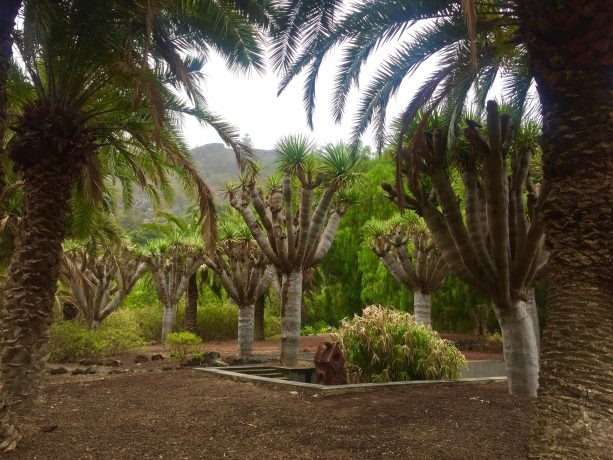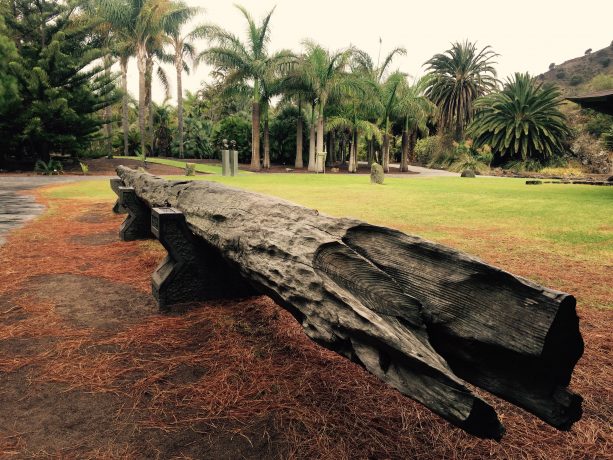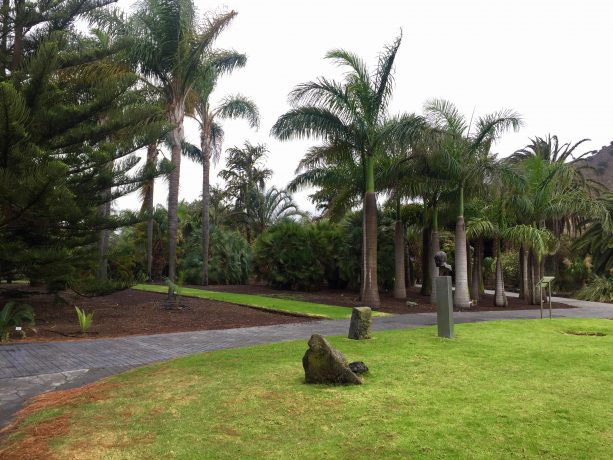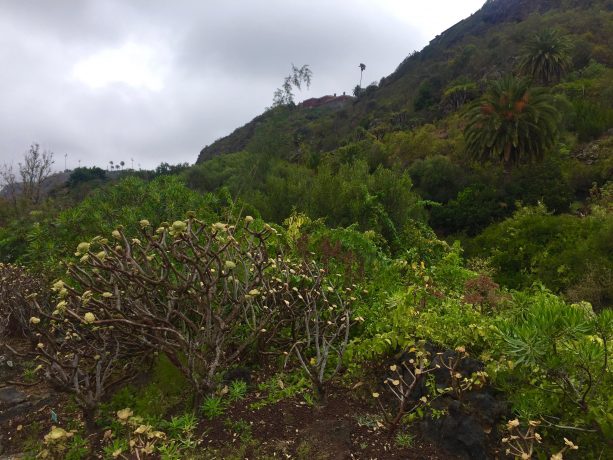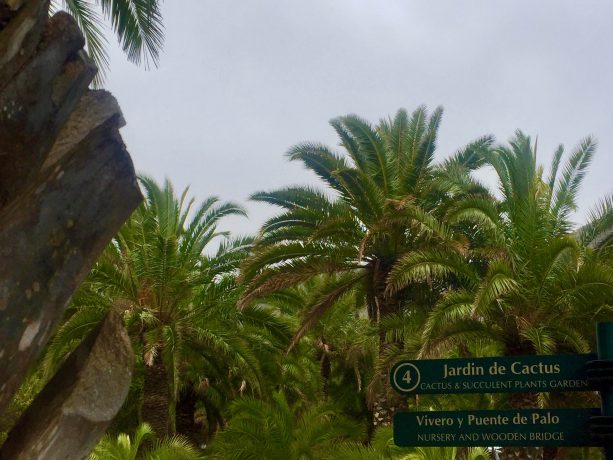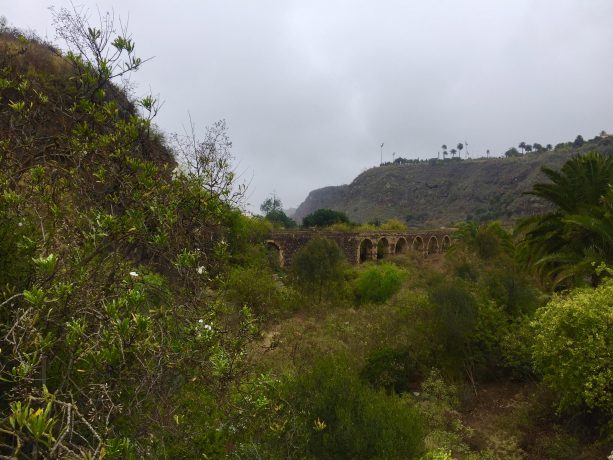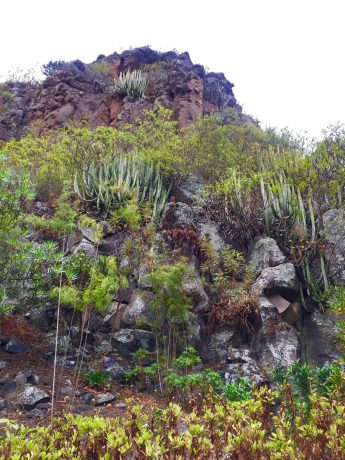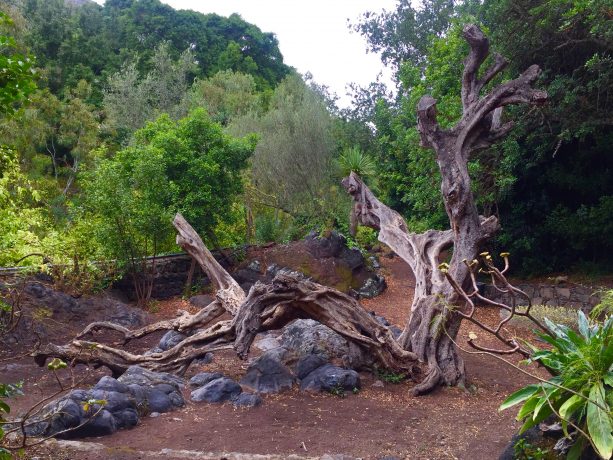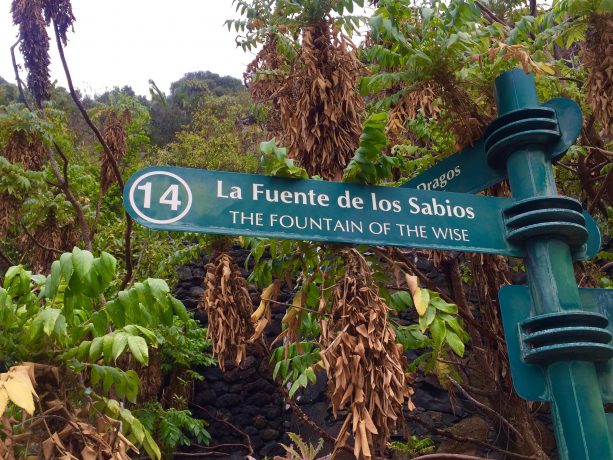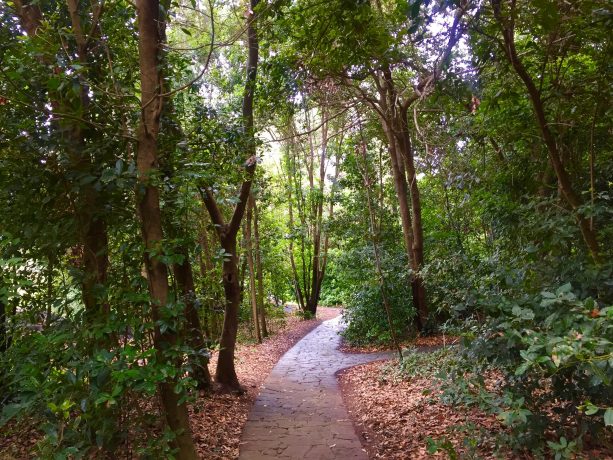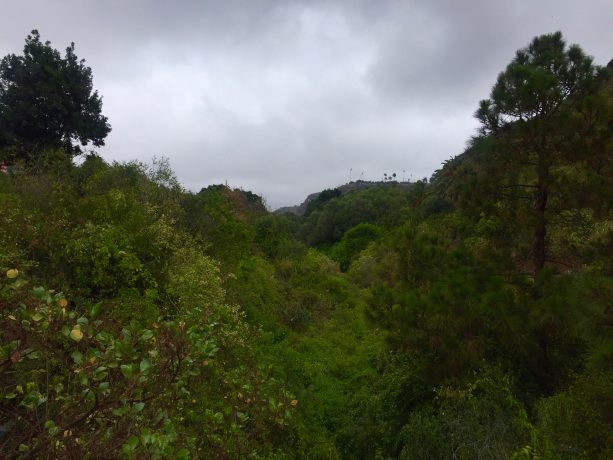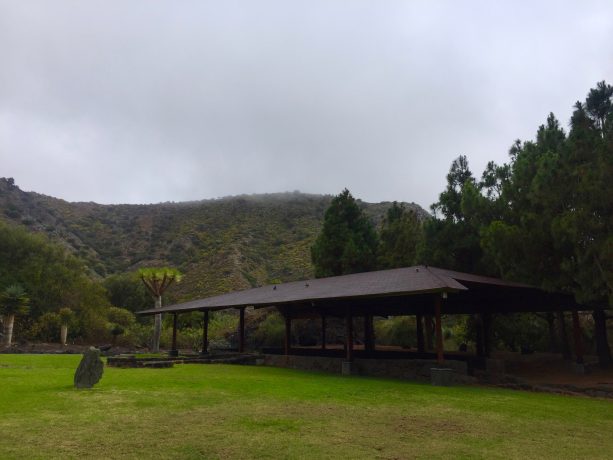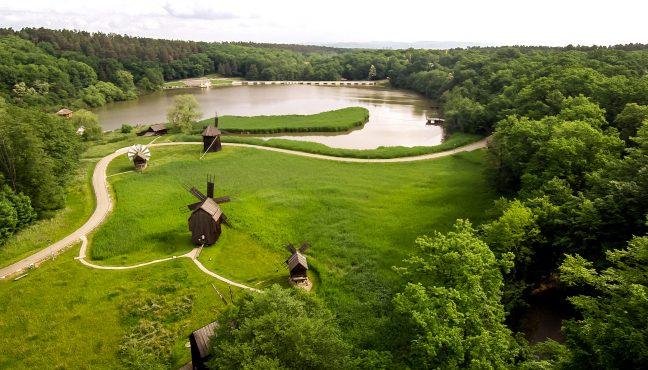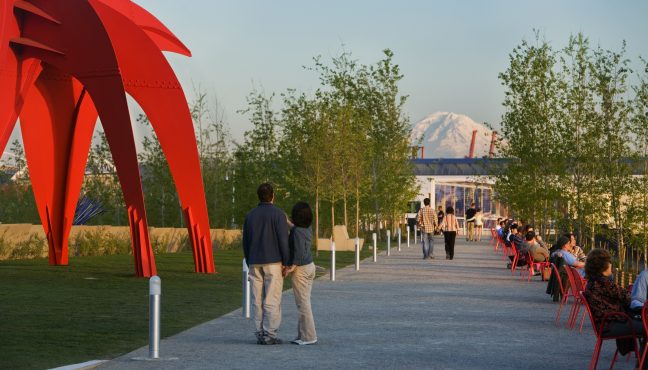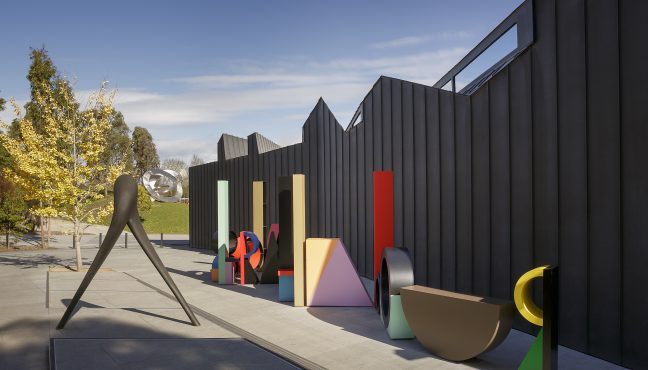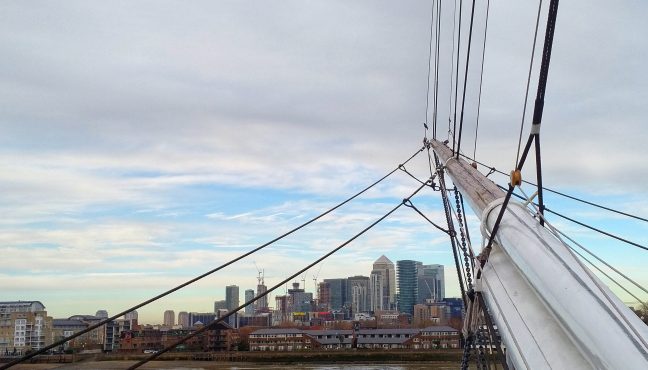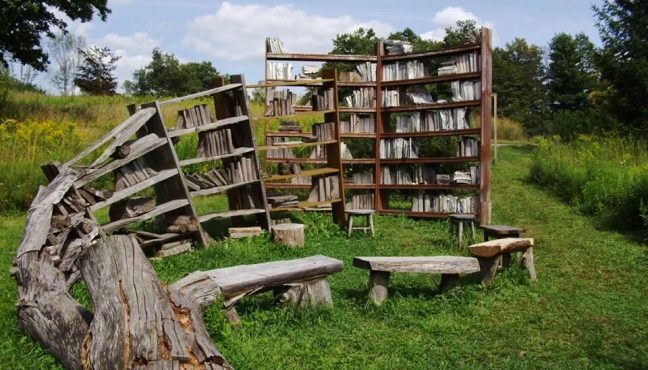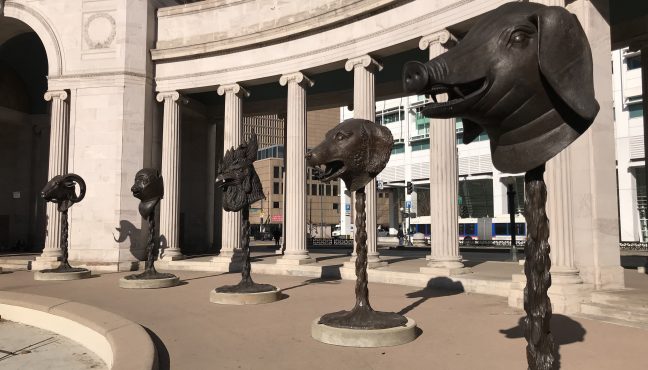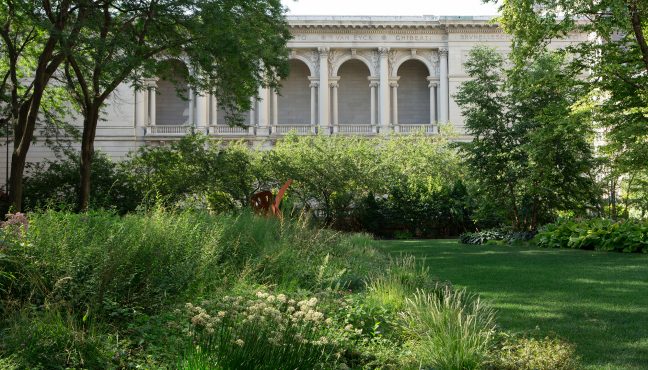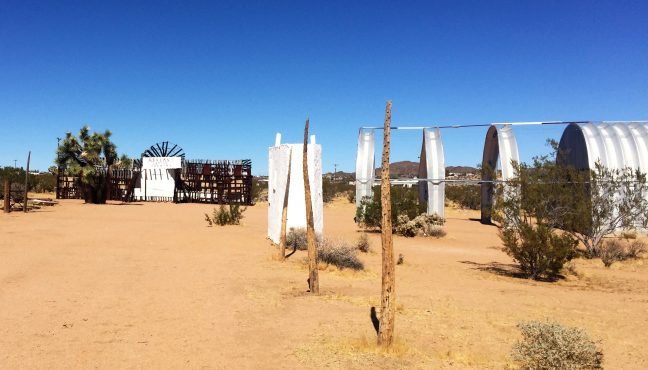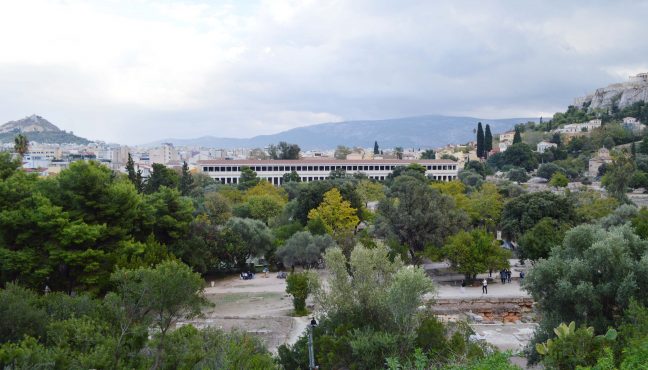There are seven paradise islands in the Canaries, which in the old days were known as the Isles of Happiness, and were often visited by ancient Greeks and Romans. Each one of them is unique and has its own attractions which draw many visitors every year. Gran Canaria has it all: the beaches and the mountains. Fuerteventura is the always sunny island, Lanzarote has the most beautiful beaches, La Gomera is the greenest isle, Tenerife has the higher peak of Canaries and a bit of snow, El Hierro is a rocky one, La Palma is known by its volcanic landscape. Though each island has an amazing flora, botanist Erik Ragnar Svensson created a place where all of the varieties can be presented together. The lucky island chosen for the unique Botanical Garden is Gran Canaria.
Botanical Garden Viera y Clavijo is a great place to spend a rainy day (there are not that many, but still it happens and it happened to us). The Garden is located in the city of Tafira Alta, only 7 kilometers aways from the capital of the isle Las Palmas de Gran Canaria. It has a surface of 27 hectares and it’s best to prepare for a long walk. Comfortable shoes are a must!


The first work was started in 1952 and lasted seven years until 1959 when the Garden was officially opened to public. It was named by the pioneer researcher of Canaries flora, 18th century scientist Jose Viera y Clavijo.
Even on a rainy day, the Garden makes a huge impression as visitors suddenly find themselves in a jungle full of magnificent plants, carefully chosen and organized. The Garden is located in a valley, on the slopes and at the bottom of a quite steep gully, so wherever you look, up or down, the view is amazing. Little colorful houses stick out from the green like wild mushrooms, not to mention the flora around. The way to the Garden is truly picturesque.
You can check the map at the Garden's gate and pick the route around the parts, which seem the most interesting, though the best way to see it is to literally get lost and simply absorb the peaceful and green aura of the place.
Plaza de La Palmeras, or the Palms Square, is located right in front of the Garden. Its collection of the Canadian Date-Palms, which are one of the several types that appear on all seven islands and also considered to be the endemic one. Palms are often presented as one of the symbols of the Canaries. At the Square, there is also an open-air exhibition of the sculptures collection by the Canarian artist Placido Fleitas titled as „The Magic of Nature”.
Moving towards the central part of the Garden we enter Jardin de las Islas, the Garden of the Islands, where species specific for each island are presented on the spacious lawn. The total number of the types of flora occurring on the archipelago are about two thousand and around five hundred of them are the endemic types.
Another garden on the route is Jardin de Suculentas, or Succulents Garden, that gathers about two thousand types of the thick-leaf plants including aloe and a very rich collection of cactuses. The plants here are not only from the Canaries, but also from Africa, Madagascar and Central and South America.
The last garden is Jardin Macaronesico, or the Macaronesian Garden, which is partly located by the Fernando Navarro Square, right next to the arboretums. The endemic specimen presented here are from both the archipelago and Madera; there are massive Dragon Dracaenas and Maderian junipers. In the Botanic Garden, you can also find two greenhouses: one is full of tropical plants and the other presents more of Macaroensian flora, but the more delicate and demanding kinds.
The slopes of the gully where the Botanic Garden is located are decorated with the Pine Woods (Áreas de Pinar). The Canarian Pine is the only tree type occurring in the woods of Tenerife and La Palma; It’s a close cousin of Himalayan Pine and can grow up to 30 meters (though at times even up to 60!). Walking through the Pine Woods and looking down at the base of the gully, you can see La Laurisilva, or the Wood of the Laurel, which was planted there in 1964, and gives this part of the walk a bit of a romantic hint.
In the lower part of the Garden, is the Zone of the Coast (Zonas Bajas y de Costa) which shows the vegetation specific to the seaside and is divided into two parts. Close to the bottom of the gully (and close to the restaurant), there is Bosque Termoesclerofilo, the always green Wood of thick leaves, which collects all the Canarian plants such as date-palms, dragon Dracaenas, olives, junipers and pistachios.
By the square of Viera y Clavijo, where you can find the statue of the Garden’s patron, is a viewpoint from where you can admire the beauty of the green puzzle of the Botanical Garden.
Apart from being a great attraction for visitors of the island, the Garden is actively working in the sector of nature conservation. The Garden is gathering the seeds of the endangered Canarian endemic species. The Botanical Garden used to have its own scientific magazine, which was publishing between 1976 - 2008. Currently they are also very active in educational activities for school and kindergartens as well as in organizing classes or helping teachers.


If you are interested in nature, then this place is a perfect match for you. But even if you are only looking for something special to see that is far from loud touristic places and the heat of the beach, then this place would be perfect. It's even more beautiful when it rains, as the palms are the best umbrellas on the island!
